TRIBES OF THE OMO
September 15 – September 28, 2012
This is a true photographic expedition to experience some of the most beautiful tribes and remote on the African continent.
Secure your spot now
In September, I will lead a small group of photographers into southern Ethiopia’s Omo Valley, one of the most culturally rich tribal regions on the African continent. For generations these tribes have been shielded from the modern world in a place that is still so raw, natural, and timeless. However, change is happening quickly in this region, which will soon impact their traditional clothing, body painting and way of life.
Inspired by their environment of wild trees, exotic flowers and lush vegetation these tribes use colorful make-up, of bright yellows, startling whites and rich earth-reds created from the clay soil, and flamboyant accessories and brilliant head decorations to become a walking body of art. As a celebration of themselves they paint each other’s bodies and make bold decisions about their outfits motivated by the sheer fun of creating and showing off to other members of the tribe.
We have access to the villages of the Arbore, Kara, Hamar, Mursi, and Dassenech. This is an opportunity to photographically document their daily lives, as well as experience some of their timeless ceremonies. It is likely we will meet several other tribes along the way and in route, so the precise time spent in each village will depend on what activities are taking place and the goals of the group. In true expedition style I have left the program flexible to ensure there is enough time to immerse our selves in these cultures and take advantage of any photographic opportunities that may arise. This will truly be an experience of a lifetime!
I spent a long time researching this region to find the right guide and outfitter to visit this most unique and amazing area. I have made three expeditions to this area since January 2011, establishing strong relationships with the tribes, the local guides and learning the logistics. Although this is not technically a teaching workshop, I will be discussing the challenges of photographing people, cultures, working in remote locations and I will be available for any technical questions. We will have a lot of time as a group to collaborate, discuss all things photographically, and learn from each other. You will find that you learn a lot by traveling in a small group on location together.
HIGHLIGHTS
- Visit one of the world’s most remote tribal areas that few have photographed
- Comfortable 4X4 vehicles with air-conditioning.
- Our guide, whom I have work with previously is very experienced working with professional photographers and in negotiating with the tribes.
- A small group limited to 7 participants
- Photograph a way of life that will soon be lost to the world
THE ITINERARY
Day 1 September 15
Depart home.
Day 2 September 16, 2012 Addis (1 night)
Arrive at Bole International Airport, Addis Ababa, Ethiopia. You are met and transferred to our hotel by private vehicle. Meet the tour leader for dinner and orientation this evening. Overnight at the Hilton
Day 3 September 17, 2012 Arba Minch(1 night)
We rise very early this morning for Ethiopia’s famous Coffee and a quick breakfast. We depart for Abra Minch, which is situated in the Great Rift Valley. The drive will give us time to decompress from modern life and sink into the ambiance, the beauty, and the rhythm of Africa.
We pass by tall thatch roof huts fantastically painted in African style art with an ornate piece of pottery crowning its top. The local people are going about their daily lives in the village, working the fields, carrying large Jerry cans of water, and creating pottery and handicrafts that will be sold in the local market. Sparse of private vehicles the roads are used more for driving herds of livestock, public transport, and walking from the villages to town. We arrive in the early evening as the sun begins to descend and the road changes to dirt siring up the rich red African soil creating a golden orange glow over the landscape.
Day 4 September 18, 2012 Turmi (3 nights)
This morning we head tot he Omo Vally, arriving in Turmi, home of the Hamar tribe. The Hamar women are striking; wearing beautiful colorful beaded skins, ornate necklaces, and metal bangles around their wrist and ankles. Famous for their hairstyle — a crown of long dread lock like braids covered in ocar — the Hamer women are the most decorated of the Omo people. We will arrive in time for a late lunch, get settled in and then have an afternoon visit at a Hamar village. Over night at Buska Lodge. This will be our home base for the next three nights, which will give us a better chance to be invited to a bull jumping ceremony or rehearsal and also give us access to the Abore and Dassenech tribes.
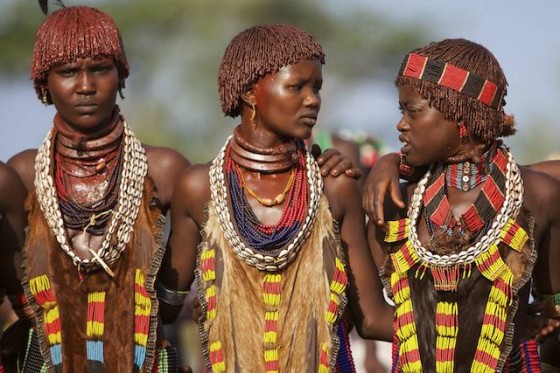
Day 5 September 19, 2012
Today we will rise early and drive to the Arbore tribe. Each tribe of the Omo valley has a specific way of dressing and decorating themselves as a way to visually associate themselves with their unique customs and values. Abore women are well known for their long headdresses. The girls shave their heads to indicate virginity, and only start growing hair after marriage.
Afternoon – we will hope for word of a bull jumping rehearsal or ceremony- if not we will visit with the Hamar tribe.
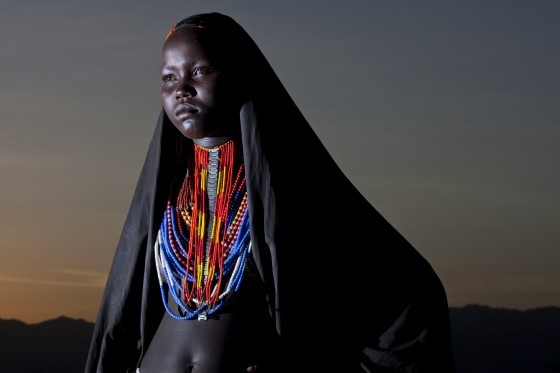
Day 6 September 20, 2012 Turmi
This morning we will rise early and drive to the edge of the Omo river. We will cross the river by canoe to the villages of the Daasanach tribes (a motor boat or a ferry maybe available but is not guaranteed). The Daasanach are a semi-nomadic tribe numbering approximately 50,000. Their clans stretch across Sudan, Kenya and Southern Ethiopia. The are known for their very unique and ornate hair-buns.
Afternoon – we will hope for word of a bull jumping rehearsal or ceremony- if not we will visit a Hamar village and try to arrange something special.

Day 7 September 21, 2012 Murulle (3 nights)
This morning we will have our last visit with the Hamar at sunrise and in soft morning light. We will head back to the lodge for a late breakfast and to check out. We then head to Kara territory where we will settle into our lodge on the banks of the Omo River.
The Kara excel in face and body painting that is practiced daily in preparation of their dances and ceremonies. They pulverize locally found white chalk, yellow mineral rock, red iron ore and black charcoal to decorate their bodies often mimicking the spotted plumage of a guinea fowl. The men create highly decorated clay hair buns, which can take up to three days to complete. Their ornate body scaring where a cut is made with a knife and ash is rubbed into the wound to produce a raised welt is also a known characteristic of the Kara.
This afternoon will be our first visit with the Kara.
Day 8 -9 September 22 -23, 2012
We have two full days to photograph this amazing tribe. We will be able to photograph them in their villages, along the river, set up individual and group portraits, goat and cattle herding, dancing and just immersing ourselves into their culture. I find the Kara to be one of the friendliest tribes along the Omo and love spending time with them.
We may also be able to plan a visit the Nyagatom tribe.
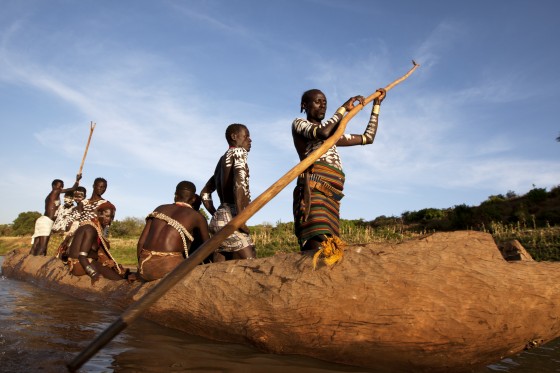
Day 10 September 24, 2012 Jinka (2 nights)
This morning we will have one last sunrise photo shoot with this tribe before heading to Jinka. If time allows we will have an afternoon visit to the Benna or Ari tribe.
Day 11 September 25, 2012
Today we visit the Mursi Tribe. Known for their lip plates and face painting. The women first started using the lip plates as a way to disfigure themselves so the slave traders would be appalled by the way they look and not take them into slavery… later it became a sign of beauty used to get a husband.
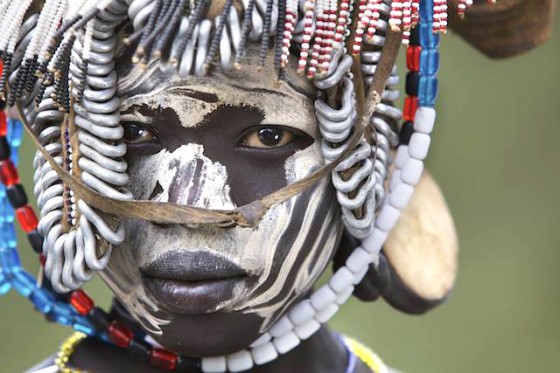
Day 12 September 26, 2012 (1 night)
This morning we will depart for Arba Minch and take advantage of any photographic opportunities in route. We will arrive at our beautiful lodge in time to relax on the deck overlooking two lakes and share our stories of the Omo.
Day 13 September 27, 2012 (1night)
We drive back to Addis where we will have day rooms until our transfer to the airport for our departure for home.
Day 14 September 28, 2012
Arrive home
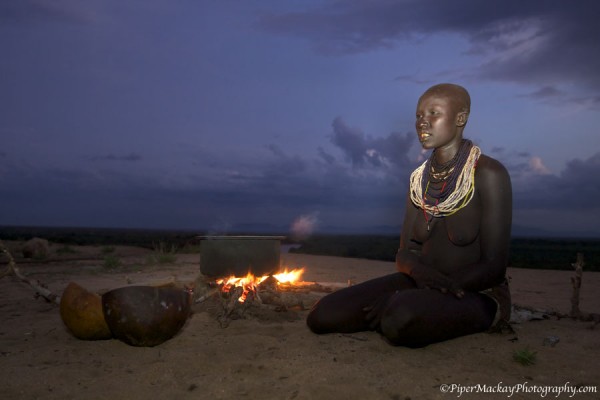
Is this trip for you?
This expedition is for anyone who wants to experience some of the most remote and beautiful tribes on the African continent. This expedition is focused on producing high quality images of extraordinary subjects so we will be rising very early in the morning for the best light. These tribes are remote so once in the Omo valley we will be driving on dirt roads in comfortable 4X4 utility vehicles. When the tarmac roads begin to take you directly to these tribes, the mass tourism will have begun to change their appearance and traditions forever. This expedition was created for photographers with a good working knowledge of the basics of photography, composition, and equipment. Depending on your vision, some experience working with flash is a bonus. Although this is NOT a workshop there will be a lot of informal instruction and I am always available for any question you may have.
This expedition will provide you with an experienced guide that has worked with top photographers. This expedition will get you to some of the most remote tribes in Africa. This expedition will provide you with some of the most extraordinary photographic opportunities and an experience of a lifetime.
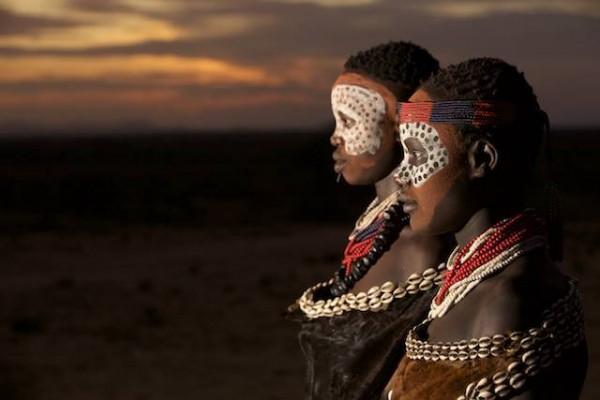
The Price
The price of this 14 day expedition to visit some of the most ornate tribes on this planet is $6,700. This price is based on double occupancy.
Single supplement $900.00 ” if available”.
Due to the limited number of spaces available, if a solo guest is willing to share and we can match with another guest of the same gender, we will do so. If a solo guest is unwilling to share, then a single supplement will be charged (up to, but not exceeding the full sharing cost). If we are unable to match a solo guest with another guest of the same gender, then the single supplement will be charged.
What’s Included
- Accommodations
- All the 3 meals of the day with mineral water
- Tourist standard 4X4 utility vehicle with air-conditioning
- Entry, scout, villages, and road fees
- National English speaking escort guide and local tribal guides
What’s NOT included
- International airfare and/or other transportation between your home and Addis Abba
- Visas
- Travel Insurance (REQUIRED to participate on this trip)
- Personal purchases (including shopping, spirits, liquors, laundry, telephone calls, etc )
- Gratuities
- Optional extra activities
- extra photo fees
- Pre- and Post- expeditions tours
- Meals or accommodations before or after the expedition (except as noted in the detailed itinerary)
Please Understand;
Interested in Joining us?
The group size for this expedition is limited to 7 participants and will fill quickly. If you want an opportunity to experience and photograph these extraordinary tribes before their traditions are watered down by the encroachment of the modern world, then now is the time to register. A $1,500 non-refundable deposit and the completed registration form is required to secure your spot. Once the tour is full, I will except request for the wait list by email.
Registration Form (PDF ~430 KB)

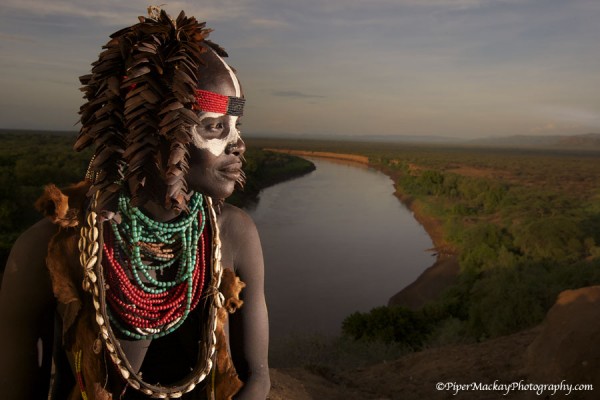
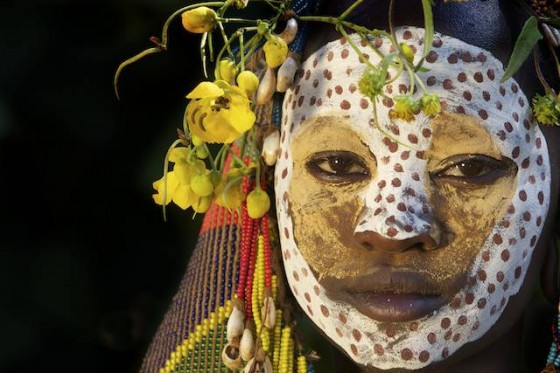
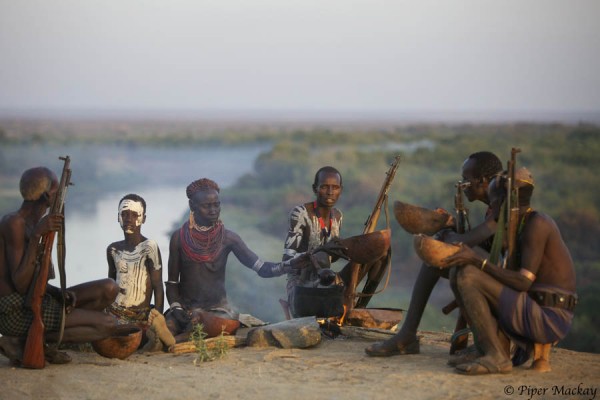
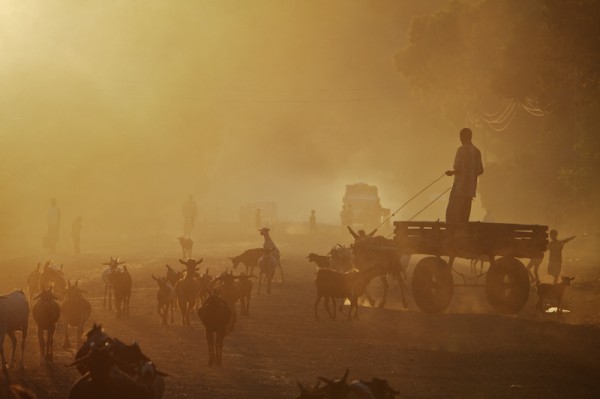
Everything is very open with a precise description of the issues.
It was definitely informative. Your website is very useful.
Many thanks for sharing!